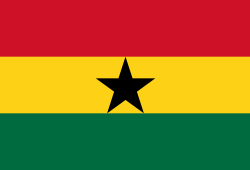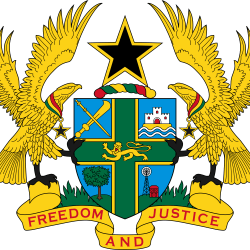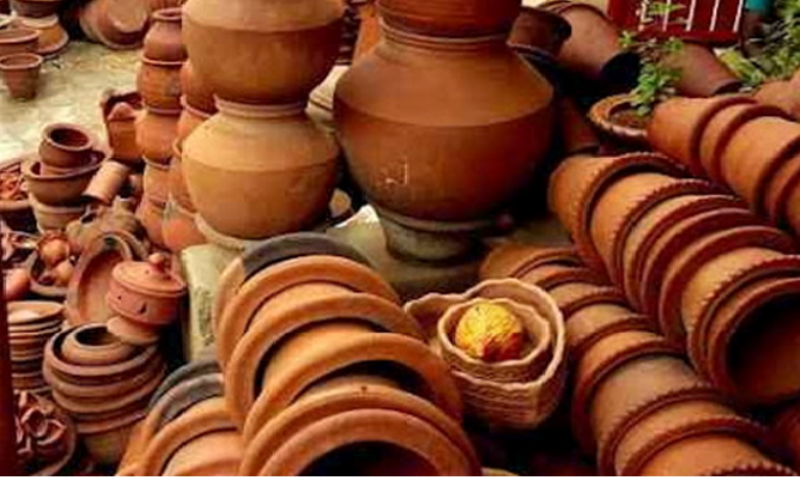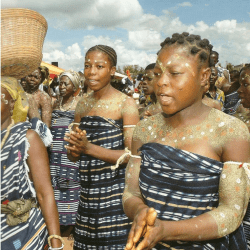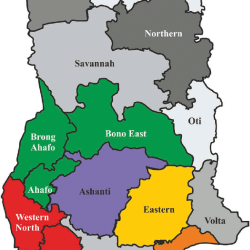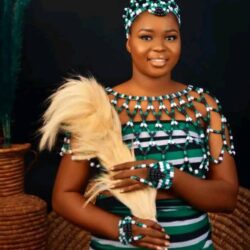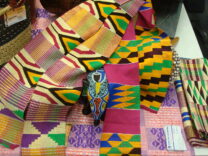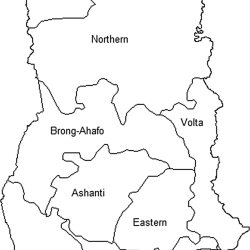Ghana is noteworthy for being the first African country to gain independence from the British. Ghanaian officials commemorated this significant transformation by renaming the land after a famous indigenous culture from the past.
While mythical in nature, these evocations of noble origins, combined with a rich cultural heritage and a militant nationalist movement, have provided unifying symbols and a sense of common identity and destiny to this ethnically diverse country. The Ghanaian people have kept their civilization free of major internal strife and continue to develop their vast natural, human, and cultural resources.
Geographical Location
Ghana is situated on Africa’s west coast, roughly halfway between Senegal and Cameroon. Côte d’Ivoire (Ivory Coast), Burkina Faso, Togo, and the Atlantic Ocean form its borders. The subequatorial climate of Ghana is hot and humid, with distinct seasons of wet summers and dry winters. It is hotter in the north than the coastal areas.
Ghana is situated on Africa’s west coast
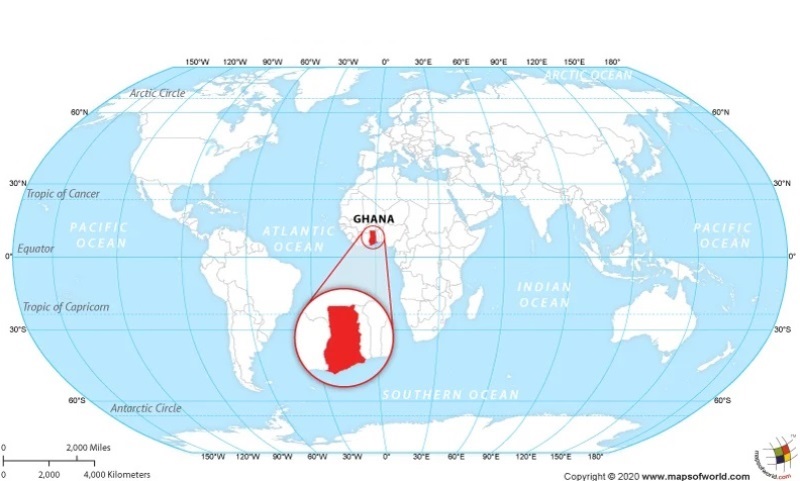
Language
Ghana’s official language is English, which dates back to the country’s colonial past. It is the official and instructional language of the country. The most frequently spoken language, Akan, has earned the position of a de facto national language. Many members of other tribes study Akan as a second language and utilize it proficiently for intergroup communication in addition to the high number of native speakers. The next two most common languages are Ga-Adangme, Ewe and Hausa. Many Ghanaians are multilingual, speaking one or two indigenous languages in addition to their mother tongue and English. Despite the fact that Ghana is surrounded on all sides by francophone countries, few Ghanaians are fluent in the language.
Symbolism
The black star is the most conspicuous symbol, as it represents black pride and strength, as well as a dedication to pan-African solidarity, which were key elements in motivating resistance to British authority. The flag and national coat of arms, as well as the national song, feature it. Other significant symbols are derived from Akan customs that have become part of national culture. The ceremonial sword, linguist’s staff, chief’s seat, and talking drum are among them. The kente fabric, Ghana’s national garment, is another source of common identity and pride. It’s made of beautifully colored silk that’s weaved into elaborate designs.
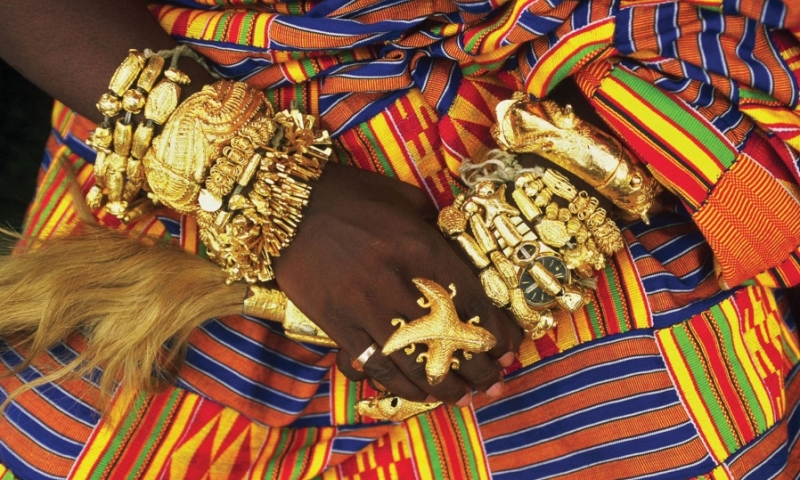
Kente is a source of common identity and pride
National Identity
In spite of its disparate origins and arbitrary boundaries, Ghana has developed a modest degree of national coherence. British rule in itself provided a number of unifying influences, such as the use of English as a national language and a core of political, economic, and service institutions. Since independence, Ghanaian leaders have strengthened national integration, especially through the expansion of the educational system and the reduction of regional inequalities. They have also introduced new goals and values through the rhetoric of the independence movement, opposition to “neo-colonialist” forces, and advocacy of pan-Africanism. The second set of common traditions stems from indigenous cultures, especially from the diffusion of Akan institutions and symbols to neighboring groups.
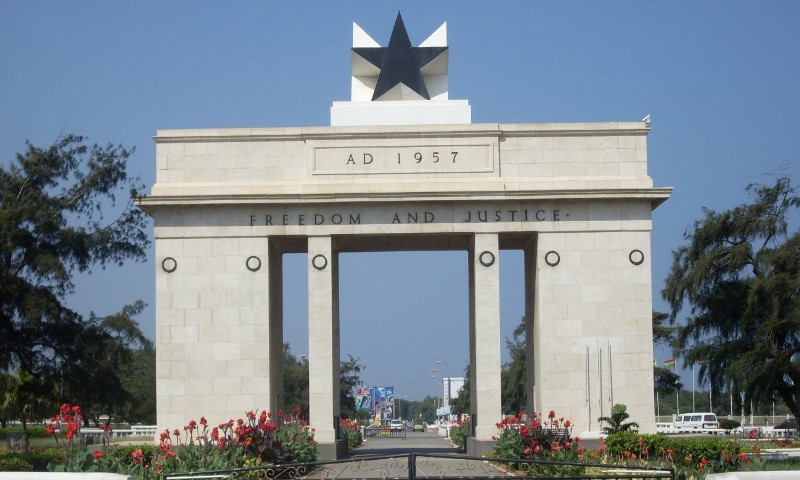
The Independence Arch is the symbol of Ghana’s independence
Ethnicity
Ghana contains a great diversity of ethnic groups. The Akan are the most numerous, consisting of over 40 percent of the population. They are followed by the Ewe, Ga, Adangme, Guan, and Kyerepong in the south. The largest northern groups are the Gonja, Dagomba, and Mamprussi, but the region contains many small decentralized communities, such as the Talensi, Konkomba, and Lowiili. In addition, significant numbers of Mossi from Burkina Faso have immigrated as agricultural and municipal workers. Nigerians are widely present as traders.
Urbanism
Housing is made up of a cluster of interconnected rooms organized in a square around a central courtyard that acts as the hub of household activities. The king’s or chief’s palace is a more elaborate version of the basic home. The layout of settlement in the north is substantially different, with dispersed farmsteads. There are Western urban infrastructures, mainly in the coastal ports, such as Accra, Takoradi, and Cape Coast, a pattern that postcolonial governments have followed. The same are in Kumasi and surrounding regions. Much of the vibrancy of urban life is due to the incorporation of indigenous institutions, especially within the commercial sector. Commerce is dominated by open-air markets, such as the huge Markola market in Accra, and Kejetia in Kumasi where thousands of traders offer local and imported goods for sale.
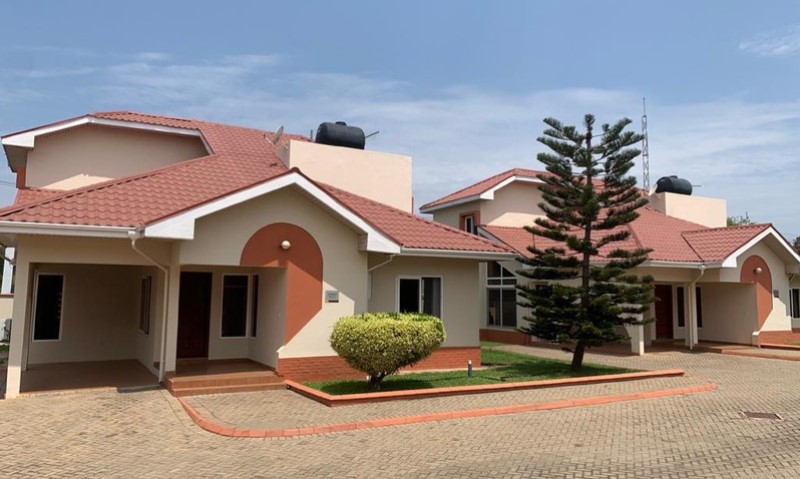
A western urban house in Ghana
Food
The basic diet consists of a starchy staple eaten with a soup or stew. Forest crops, such as plantain, cassava, cocoyam (taro), and tropical yams, predominate in the south. Corn is significant, especially among Ga, and rice is also popular. The main dish is fufu, pounded plantain, or tubers in combination with cassava. Soup ingredients include common vegetables and some animal protein, usually fish, and invariably, hot peppers. Palm-nut and peanut soups are special favorites. The main cooking oil is locally produced red palm oil. The northern staple is millet, which is processed into a paste and eaten with a soup as well. Indigenous diets are eaten at all social levels, even by the Westernized elite. Bread is the only major European introduction and is often eaten at breakfast. Restaurants are not common outside of urban business districts, but most local “chop bars” offer a range of indigenous dishes to workers and bachelors. People frequently snack on goods offered for sale by street hawkers.
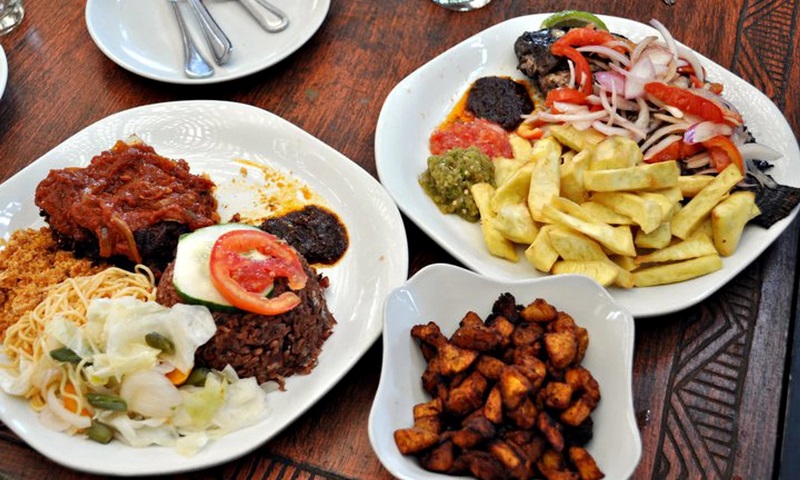






Foods in Ghana. Photo credit: theculturetrip.com
Food and Ceremonies
Most households raise chickens and dwarf goats, which are reserved for special occasions, such as christenings, weddings, traditional festivals, and Christmas. Among the Akan, the main indigenous celebration is odwira, a harvest rite, in which new yams are presented to the chief and eaten in public and domestic feasts. The Ga people celebrate homowo, another harvest festival, which is marked by eating kpekpele, made from mashed corn and palm oil. Popular drinks include palm wine, made from the fermented sap of the oil palm, and home-brewed millet beer. Bottled European-style beer is widely consumed. Imported schnapps and whiskey have important ceremonial uses as libations for royal and family ancestors.
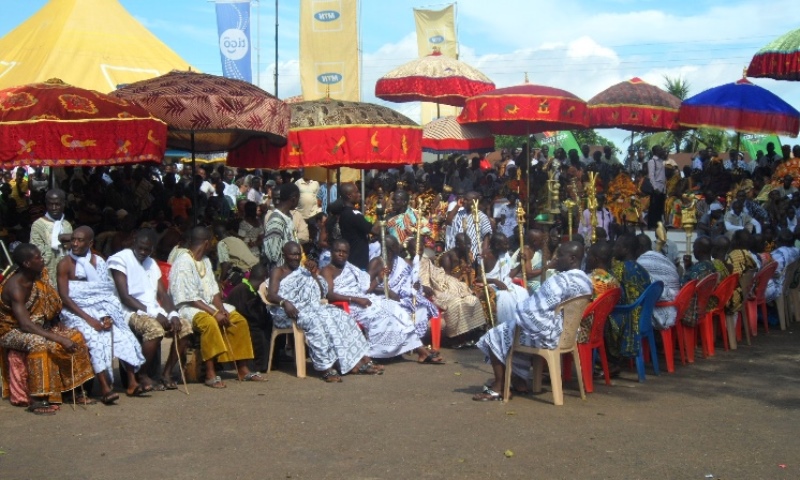
Odwira Festival is celebrated annually in the month of September and October
